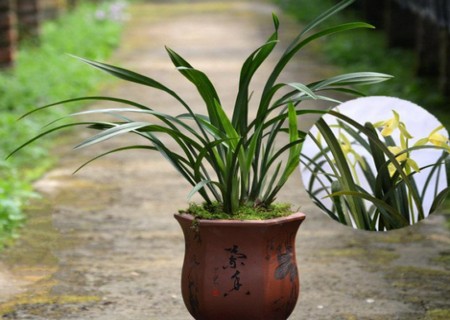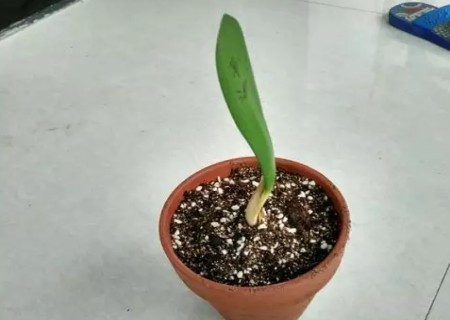Culture methods and matters needing attention of potted orchids
Jianlan cultivation is very common in China, many people like to decorate at home, build orchids beautiful, beautiful plants and leaves, is an excellent flower to beautify the environment. The Jianlan plant is vigorous and vigorous, which is placed in the forest, garden or hall, with luxuriant flowers and leaves and great verve. It can also be planted with a large high-waisted barrel basin, which is green for a long time. Flowers bloom in midsummer, cool breeze blowing orchid fragrance, make people feel more quiet, is balcony, living room, flower rack and small courtyard steps display good goods, appear fresh and childish.
The cultivation and management of Jianlan is the same as that of ordinary orchids.

1. Selection of basin
The requirement for flowerpots is not high. Flowerpots are about 20 cm in diameter and 25 cm high. As long as there are drainage holes in the bottom of the pots, they can be used to plant orchids.
Jianlan likes 3mur5 seedlings to gather in one pot, which is conducive to growth, strong seedlings and flowering, so it is generally not suitable for single seedling planting. Although single seedling can tiller new seedling, but it is disadvantageous to growth, single seedling planting is not flowering. The basic requirement of orchid flowering is three conjoined plants, five leaves must flower.
2. Distribution of soil
The bottom of the orchid basin is filled with pebbles or broken tiles to 1/3 of the basin height, and the plant material is made of burning soil and peanut shell or pond mud to beat into particles, and the burning soil particles are the best.
3. Lighting
Light is the key to the growth of orchid seedlings, which determines the yellow and green leaf color and the height of the plant type. The light is too strong, the leaf color is yellow, the blue seedling is strong and short; the light is too weak, the leaf color is dark green, and the blue seedling is thin and tall. The suitable shade of light is 65%, 75%. Those on the indoor table should choose to be close to the window, but should not be exposed to direct sunlight. In case of scorched tail. Keep ventilated to prevent germs from invading.
4. Temperature
It can be adjusted naturally in the natural environment. If you plant it indoors, you should pay attention to the dormant period of orchids and keep them warm all the year round. The optimum hibernation temperature of Jian Lan is between 0 ℃ and 12 min. If you have a good hibernation, the flowers will be more beautiful in the coming year. If you don't ask for flowers, you don't need hibernation.
5. Watering
Although the orchid appears noble, but to overcome the overindulgence of psychology, pay attention to its growth law, watering must master dry watering, do not water, watering should be thoroughly watered. Observe whether the orchid basin should be watered, with the hand touching the orchid soil not sticking to the hand, or the orchid soil just seeing white as the reference basis. When watering, we must ensure that the whole basin is evenly watered and thoroughly watered, so as to ensure the uniform distribution of the orchid root. You can use a large washbasin to fill the water, and then put the orchid basin in the water to let the water seep in from the bottom hole of the orchid basin.
6. Fertilization
As long as the blue soil is used well, there is generally no need to apply fertilizer. Agricultural compound fertilizer can be used to fertilize, each pot can be 3 murine 5 tablets per month, do not apply more. Fertilizer should not be in direct contact with Langen. Cover it with blue soil after application. Usually foliar spray can add 0.1% potassium dihydrogen phosphate. The root residual bacteria of orchids can meet the needs of nitrogen elements, and generally do not need to apply nitrogen fertilizer.
Note:
1. The dry, wet, cold and hot conditions determine whether to pour more or less. The climate is dry in late spring and early summer, dry and watered after autumn, less watered in rainy summer and rainy autumn, and less watered in cold late autumn and winter and early spring. Water more when the hot wind is strong and less when the wet wind blows frequently.
2. The orchid pot is dry, and the watering time is prolonged, and the tip of the orchid leaf is often scorched, which is also a sign that it can be watered, but it is too late. It hurts the orchid leaf because of thirst, and the injury cannot be cured.
3. There are generally three kinds of watering orchids. One is bubble watering. That is, soak the orchid basin 3/4 into the water, wet the basin thoroughly and filter out the stagnant water. The second is irrigation. Pour water directly into the basin soil until the center of the basin soil is wet. This method, upstream and downstream, must be irrigated repeatedly in order to achieve the effect of watering through. The third is spraying. That is, spray water with a thick drop sprinkler to wet the whole orchid environment and let the water seep from the soil surface to the upper Runze orchid basin. Orchid master, for these three watering methods, often because of the basin and different mixed use, the effect is ideal.
4. Orchids like yang but avoid strong yang. According to this habit of orchids, domestic orchids need shade. The amount of shading can be up to 70%, that is, 70% of the sun is covered, and 30% of the sun is generally exposed.
Time: 2019-05-31 Click:
- Prev

Diagram of split-bud culture of Cymbidium
When the orchid enters its adult stage, it can grow new buds, break them off and cultivate them into new plants. this is called asexual reproduction of Cymbidium, which can be divided into stem lateral buds, stem bottom buds and inter-leaf buds according to the position of the buds. When the buds grow to 6 leaves, the stem bottom buds and lateral buds can be treated by ramets.
- Next

Culture methods of potted Osmanthus fragrans
The four seasons sweet-scented osmanthus is a precious flower in China, which not only has a wide range of viewers, but also has high economic value. It is deeply loved by people. Its flowers are beautiful and fragrant, and they are often planted as landscape trees with high appreciation value. Friends who like sweet-scented osmanthus can also put sweet-scented osmanthus trees as potted plants in the living room.
Related
- Fuxing push coffee new agricultural production and marketing class: lack of small-scale processing plants
- Jujube rice field leisure farm deep ploughing Yilan for five years to create a space for organic food and play
- Nongyu Farm-A trial of organic papaya for brave women with advanced technology
- Four points for attention in the prevention and control of diseases and insect pests of edible fungi
- How to add nutrient solution to Edible Fungi
- Is there any good way to control edible fungus mites?
- Open Inoculation Technology of Edible Fungi
- Is there any clever way to use fertilizer for edible fungus in winter?
- What agents are used to kill the pathogens of edible fungi in the mushroom shed?
- Rapid drying of Edible Fungi

